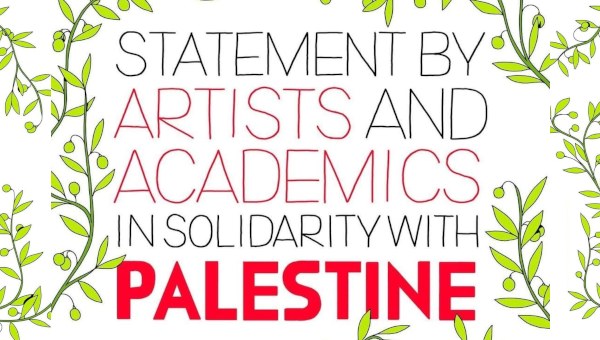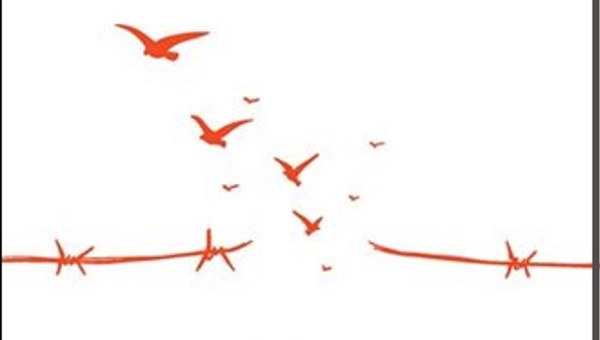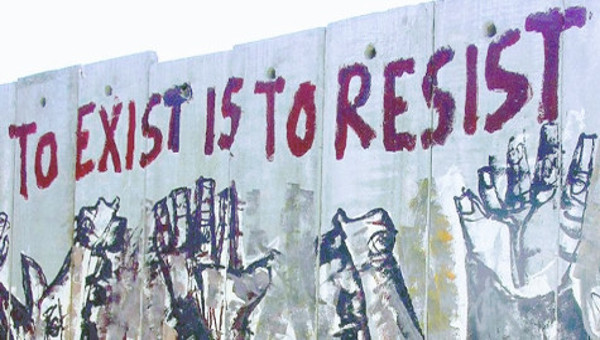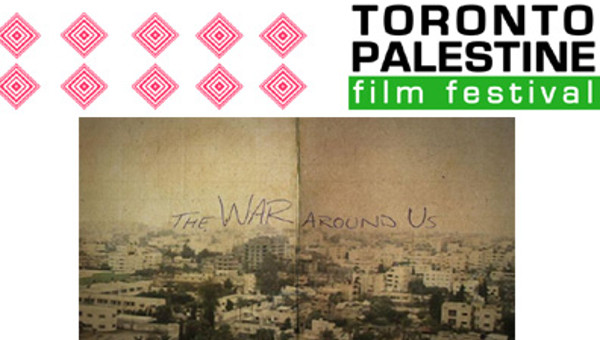The ROM Dead Sea Scrolls Exhibit
Re/Mapping Identity, Culture, & Colonial Discourse
“He who controls the present, controls the past.
He who controls the past, controls the future.”
— George Orwell
Even before the highly anticipated six-month, $3-million collaboration between the Royal Ontario Museum (ROM) and the Israeli Antiquities Authority (IAA) showcasing the Dead Sea Scrolls was officially launched in late June, the exhibit was already the subject of growing controversy. “Dead Sea Scrolls: Words that Changed the World,” as the exhibit is entitled, first attracted international attention in April when Canadian Prime Minister Stephen Harper and executives at the ROM were each sent letters of protest from senior officials of the Palestinian Authority (PA) – signed by Prime Minister Salam Fayyad and Minister of Tourism and Antiquities Khouloud Diabes, respectively – declaring that the scrolls were in fact illegally seized by Israel following its occupation and subsequent annexation of the West Bank in 1967.[1] The PA not only called for the repatriation of the scrolls but further argued that they merely represent one example of possibly millions of other artifacts that have been systematically looted by Israel from occupied Palestinian territory over several decades, a message that has since been echoed by a chorus of supportive community groups who continue to organize weekly pickets outside of the ROM in protest.
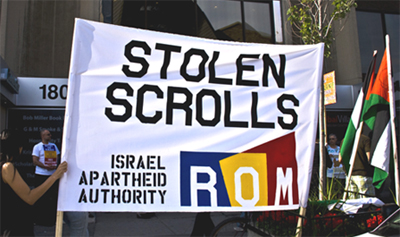
The majority of the Dead Sea Scrolls were excavated in eleven caves near the site of Qumran, one kilometer along the northwest shore of the Dead Sea, by the Palestine Archaeological Museum (also referred to as the Rockefeller Museum) in a joint expedition with the Department of Antiquities of Jordan and the Ecole Biblique Française between 1947-1956. Originally found quite by chance by an Arab Bedouin named Mohammed Ahmed el-Hamed in 1947, the scrolls are by now widely regarded as one of the greatest archaeological discoveries of the twentieth century. Consisting of approximately 900 documents in various states of completeness, the scrolls are said to represent the oldest known version of the Old Testament Bible (approximately 150BC-70CE) and are considered sacred to Judaism, Christianity, and Islam alike; they are written largely in Hebrew, but many can be found in Aramaic and Greek script as well.
The scrolls were displayed at the Palestine Archaeological Museum in east Jerusalem until 1967, whereupon after the Six-Day War they were seized and relocated to the Shrine of the Book at the Israel Museum in western Jerusalem. Several additional excavations have since occurred in the West Bank and east Jerusalem whose artifacts continue to be illegally appropriated by Israel, under the auspices of the IAA, from what is internationally recognized as occupied Palestinian territory. Israel unilaterally declared Jerusalem its “…complete and united capital” following the Jerusalem Law of 1980; however, the decision was immediately deemed null and void under UN Security Resolution 479 and later reinforced by successive UN Resolutions, 242 and 338, that together call on Israel to withdraw completely from all territories occupied in 1967.
Does International Law Matter?[2]
While the debate among any given circle of academics as to the biblical and archaeological significance of the Dead Sea Scrolls rages on, how exactly the artifacts have come to be in the possession of the IAA or put on display at the ROM in the first place seems to be, thus far, a question of lesser concern. According to the PA and several authoritative legal opinions, the exhibit stands in clear and demonstrable violation of at least four binding international treaties of international law concerning cultural artifacts that apply, in turn, to Canada, Israel, and the ROM itself.
The ROM, for its own part, is a member of the Canadian Museums Association (CMA) whose Ethics Guidelines states that “museums must guard against any direct or indirect participation in the illicit traffic in cultural and natural objects […] that are: stolen; illegally imported or exported from another state, including those that are occupied or war-stricken…” Assuming that such agreements mean anything at all, the ROM has clearly fallen short of the ethical standards to which it is a party.
As for Canada, whose role is one of host nation to the exhibit, the legal obligations stipulated seem even more convincing. Canada is a signatory to the First and Second Protocol of the UNESCO “Convention for the Protection of Cultural Property in the Event of Armed Conflict” (1954), in addition to the “Convention on the Means of Prohibiting and Preventing the Illicit Import, Export and Transfer of Ownership of Cultural Property” (1970). The First Protocol of the 1954 Convention clearly requires Canada to “…take into custody cultural property imported into its territory either directly or indirectly from any occupied territory.” Article 3 of the same Protocol further elaborates that upon seizing the artifacts, Canada must “…return, at the close of hostilities, to the competent authorities of the territory previously occupied, cultural property which is in its territory.” As per the UNESCO conventions outlined above, Canada is accountable to at a minimum either deny the importation of artifacts of dubious ownership such as the Dead Sea Scrolls, or seize them at the border and assume custody of them until a negotiated end of hostilities between the Israelis and Palestinians can be secured.
Israel too is a signatory to the First Protocol of the 1954 Convention, Article 1 of which explicitly outlines a commitment to “…prevent the exportation, from a territory occupied by it during an armed conflict, of cultural property.” Concerning the question of current archaeological activity in Jerusalem specifically, UN Security Council Resolution 252 (1968) states that “…all legislative and administrative measures and actions taken by Israel, including expropriation of land and properties thereon, which tend to change the legal status of Jerusalem are invalid and cannot change that status.” Israel not only continues to illegally excavate in occupied Palestinian territory but has since its inception consistently shown itself dismissive of international law altogether, using archeology (and discoveries such as the Dead Sea Scrolls) as a necessary means to reinforce the given Zionist national narrative and, by extension, offer legitimacy to its corresponding colonial project upon which the state was founded. As the only meaningful channel of recourse still available to Palestinians – despite its obvious and innumerable shortcomings – international law continues to be useful at the very least in communicating a coherent and universal standard of justice that both challenges impunity and safeguards various affirmed political, economic, and cultural rights.
Israeli Archeology and the Bible
Supposedly a science whose credibility fundamentally relies upon its independence from political, religious, or ideological bias, Israeli archeology under the IAA is inherently imbued with a national ethos, or sense of mission, that is in fact inseparable from the wider Israel/Palestinian conflict. The archeology of the region has been studied thus far under a rationale of given assumptions so deeply rooted in biblical mythology as to only serve toward the construction of a past that is automatically exclusionary and restrictive in scope.[3] As a result, artifacts like the scrolls have come to occupy such a central space within Zionist colonial discourse as to be, as former Haaretz journalist Amos Elon said, “Almost titles of real estate, like deeds of possession to a contested country.”[4]
Israeli archeology has since the discovery of the scrolls become little more than a self-fulfilling prophecy, allowing the ‘history’ of the Bible to interpret the artifacts of successive ancient eras rather than the other way around. Because archeology also happens to be one of the only areas of study that necessarily destroys its own evidence as a result of the excavation process itself, prior layers of soil and bedrock spanning several centuries are completely destroyed in order to uncover deeper ‘Jewish’ ones.[5] As a result, Israel is able to use archeology to at once naturalize its own Zionist national narrative and erase any trace of historical continuity between Palestinians and the land in the process. The entire history of Palestine and its peoples up until 1948, in fact, has been essentially reduced to no relevance whatsoever, except insofar as it serves as the backdrop to the return of Jews to the promised biblical ‘Land of Israel.’ As historian Keith Whitelam writes in his book, The Invention of Ancient Israel: The Silencing of Palestinian History, “[the modern state of Israel has] cast its shadow of influence backwards to claim previous periods as its ‘prehistory’.”[6]
Yet in order to justify any colonial conquest, a prior historical claim to the land in relation to its existing inhabitants alone is not enough; the new regime must be portrayed as an agent of civility and cultural sophistication set against barbarity and backwardness, all along underpinned by a semblance of inferred racial superiority and entitlement. During the era of European colonialism for example, Britain, France, and most notably Nazi Germany all engaged in archaeological projects in their respective colonies to prove, through found artifacts, the inherent superiority of the white/Aryan race. The Nazis sought to retrace the glory of the Roman Empire back to Germany as evidence of Aryan racial supremacy, espousing a return to the glorious past where old virtues prevailed over the savagery of ‘lesser’ races (in particular, Jews). The primary purpose of archeology under European colonialism – just as it remains in Israel today – was twofold: first, to encourage a sense of national pride and prestige linked to the image of an illustrious past; and secondly, to legitimize colonial rule and expansionism as a ‘natural,’ even God-given, right.
Archeology of Dispossession
As a colonial power in its own right, Israel naturally refuses to apply to itself the same standards that under international law are applied to others. Using the account of the Bible as both a historical guide and moral barometer inevitably produces the effect of allowing contemporary crimes (such as Palestinian ‘Nakba,’ for example) to seem relatively mild in comparison and essentially reintroduces into popular discourse what Omar Barghouti and other analysts oftentimes refer to as the “law of the jungle” wherein colonial conquest, ethnocentrism, and dispossession are treated as the norm. Whitelam again writes:
Colonialism is not dead while the assumptions of superiority and the right of force which inspired it are inscribed in the rhetoric […] which has been taken up and reinforced in Israeli scholarship after 1948.[7]
Israeli archeology not only serves as a means of legitimizing colonial rule but is in fact a literal expression of it that has proven to be entirely consistent with official state policy overall. Whereas the illegal bulldozing of homes, expulsion of their inhabitants, and expansion of Jewish settlements in occupied Palestinian territory have by now all become familiar fixtures of official state policy, Israeli archeology continues to be the principal source of securing and annexing additional land – or what anthropology professor Nadia Abu-El Haj alternatively calls producing “facts on the ground.”[8] Such efforts to undermine any competing historical claims to the land – after the fact, by erecting synagogues over mosques, museums over grave sites, or parking lots over ethnically cleansed villages – constitute, in sum, the systematic erasure of Palestinians from the past in order to deny them a sense of purpose and place in the future.
Jerusalem for example has over time come to be portrayed as a Jewish-dominated city by virtue of an ongoing campaign to expel many Palestinian inhabitants and encourage Jewish settlement, thus coinciding with its de facto status as the ‘eternal capital’ of Israel. The Palestinian neighborhood of Silwan in east Jerusalem remains a particularly striking case study: apparently referred to in the Bible as King David’s original capital some 3000 years ago, Silwan was transformed into an archaeological site by the IAA in the early 1990s and in the span of a few years alone became scattered by dozens of Jewish settlements and even a “City of David” national theme park. The act of searching for an ancient biblical past while completely ignoring the subsequent 3000 years of history is an open violation of the ethical guidelines stipulated by the World Archeological Congress (WAC), which aims to protect indigenous cultural heritage “including sites, places, objects, artifacts, and human remains.” Although originally under the authority of a right-wing settler organization named “Elad,” no archaeological projects in Silwan (or elsewhere for that matter) occur without the permission of the IAA. As professor Yigal Bronner confirms, “The IAA itself issues the required digging permits in an internal process of dubious legality, thus allowing Elad to turn archeology into its most effective instrument of dispossession.”[9]
Rebranding Apartheid
Far from simply a historical analogy that has gained currency amongst Palestinians and international solidarity groups in recent years, the charge of Israel as an apartheid state is one that is well supported by virtually every objective criteria defined under international law.[10] The proverbial crack in the facade of Israel as a ‘normal’ state like any other has certainly been no secret but is only now beginning to be seriously addressed. As much a sign of growing desperation over a failing public image abroad as a measure of sheer resilience, the Israeli foreign ministry launched an ambitious multi-million dollar rebranding campaign called “Brand Israel” in the city of Toronto in 2008.[11] Toronto was carefully chosen as a North American test market for the campaign, presumably in large part as a response to the growing success of the city’s Palestine solidarity movement as well as its renowned cultural diversity. Consisting of public advertisement blitzes, the current ROM exhibit, and a planned special showcase on Tel Aviv at the upcoming Toronto International Film Festival, the campaign is little more than an open ploy to divert attention away from what is at its core a criminal colonial enterprise – and it is seeking to use ‘culture’ as the primary means to do it.
Several community groups have organized weekly pickets outside of the ROM in order to raise public awareness about the origins of the scrolls and demand that they be returned in accordance with international law, including the Coalition Against Israeli Apartheid (CAIA), Women in Solidarity with Palestine (WSP), and Palestine House. Israel advocacy organizations have in response vehemently refuted such claims, dismissing them as yet another attempt to reject incontrovertible historical proof of Israel’s biblical roots and its legitimacy as a ‘Jewish state.’ According to these organizations, the only possible motive behind the ROM pickets is to ensure that the scrolls remain hidden from the public forever; however, in reality the scrolls were openly displayed at the Palestine Archaeological Museum for all to see from 1947-67, and it was not until 1991 (nearly 25 years after they were seized) that they were even allowed to be shown to the public again. Only pending a total failure of basic judgment can such a classic canard of the Israeli PR machine be taken seriously.
When a popular downtown Toronto bistro used its website to warn patrons against attending the illegal exhibit, ultra-Zionist lobby groups like the Jewish Defense League immediately urged supporters to respond in kind by buying out all tickets possibly available.[12] Countering negative publicity of the exhibit by simply buying it out may improve sales revenues at the ROM but will do nothing to address why exactly it happens to be the subject of weekly pickets in the first place – which may actually be the point; the goal is not so much to win the debate over the conflict between Israelis and Palestinians but to find ways to avoid it altogether. Palestinians can no better defeat Israel militarily than Israel can be convincingly portrayed as a ‘normal’ state without first disassociating itself fully from the image of a colonial power that is perpetually at war. Israel finally recognizes that there is no such thing as a benign or benevolent occupation; it can win every single war but still lose the more important battle of public opinion.
The ‘Insidiousness’ of Culture
According to a recent article on the ROM pickets by University of Toronto professor Ed Morgan, “it is no exaggeration to say that Palestinians are conducting not just a political campaign, but a ‘cultural battle’ against Israel as a Jewish state [and] part of an insidious cultural campaign.”[13] Despite the arrogant invective in which he writes, his assessment is essentially correct. The ROM pickets are less an effort by Palestinians to declare a monopoly over the diverse cultural heritage of the region as they are the inevitable result of an enduring memory of dispossession and exile that – still today – so fully articulates the Palestinian narrative and inextricably links ancient artifacts like the Dead Sea Scrolls to the contemporary struggle over identity and land. While Israel digs ever deeper in occupied Palestinian territory to confirm its supposed biblical roots, Palestinians have simply preferred to continue to exist despite all odds. Palestinians only have survival itself as proof of the crimes committed against them in recent memory and still ongoing daily, choosing to maintain traditional dress, religious faith (both Christian and Islamic), and the historical memory of the ‘Nakba’ as their most meaningful and durable expressions of resistance.
The late Palestinian academic Edward Said put it the following way: “In the case of a political identity that’s being threatened, culture is a way of fighting against extinction and obliteration […and] a form of memory against effacement.” Just as former Israeli Prime Minister Golda Meir notoriously declared that “there is no such thing as Palestinians,” today they may exist, but the official line is still that their “…national aspirations lie elsewhere.” The battle being waged over the scrolls, like all the artifacts of the region, is not so much about any particular ethnic, religious, or even cultural based claim, per se, but more importantly a means of opposing Zionist colonial discourse in order to uphold a claim over whatever land has yet to be transformed into permanent and irreversible ‘facts on the ground.’
‘Art’ of Deception
The battle over the scrolls is hardly the first time the ROM has been at the center of controversy over the alleged misrepresentation of cultural heritage.[14] Officially promoted as an opportunity to stimulate interfaith dialogue under the familiar banner of “that which unites is greater than that which divides,” the exhibit has little to do, in fact, with “unity.” The exhibit’s website for example fails to make any mention whatsoever of anything about the scrolls or their origins that does not conveniently coincide with the given Zionist national narrative, consciously omitting irrelevant facts such as ‘Palestine’ as the commonly used name of the region during the era that they were written, the role of the original excavation team in finding them, and where they were housed until 1967. Similarly, the ROM’s preference to use in its promotional literature of the exhibit such biblical terms as the “Land of Israel” in place of Jerusalem, or the “Judean dessert” rather than the West Bank, is not only imbued with nationalistic and religious overtones that would be completely foreign to the indigenous population of the region but almost reflexively echoes Zionist colonial discourse.[15]
Promoting the exhibit under a thinly veiled guise of “unity” as a strictly biblical or academic issue, entirely devoid of any connection to the current political realities on the ground, is already to side with the narrative of the prevailing dominant power. By framing the scrolls under the common language of the Bible, the exhibit also contributes to obscuring the ongoing conflict between Israelis and Palestinians as one that is in effect timeless – something that is ‘out there,’ thus intractable and beyond resolution. As Whitelam writes:
It is simply assumed that biblical studies has no part in contemporary struggles for identity and land, when in fact the very silencing, the fact that the ‘problem’ of Palestine and the existence of a Palestinian past remains unspoken in the discourse of biblical studies, has only served to legitimate Israel’s claims to the past and the exclusion of any alternative competing Palestinian claims.[16]
Archeological Apartheid
Israeli archeology is understood and explicitly categorized by the IAA as either Jewish/Israeli or Arab/Muslim in a process whereby ancient artifacts that supposedly belong to the biblical era are actively sought after, while encouraging Palestinians to do the same concerning later Islamic periods. Following the Oslo peace process, Israel claimed it was prepared to assign jurisdiction of all ‘Arab’ and ‘Muslim’ archeological sites in the West Bank over to the PA; however, the offer was flatly refused, and the PA instead demanded control over all sites, as well as an immediate return of artifacts seized since 1967. The logic is simple: aside from conflating all Palestinian history as Islamic (openly disregarding Christian and secular influences), to apply such reductive and simplistic binary terms to artifacts that in reality have encompassed the same geopolitical space over centuries is to fundamentally overlook the region’s shared past and overlapping cultural heritage.
Israel can no more partition the land than it can the past itself, affirming its supposed biblical roots only by precluding the historical reality of ‘Palestine’ or ‘Palestinians’ in the process. Even were Qumran, for example, to be recognized as part of a future Palestinian state under the logic of a two state solution it would still, according to Israeli political scientist Meron Benvenisti, “transform the Palestinians into aliens in their homeland.”[17] Yet nothing thus far has limited Israel from excavating and looting artifacts almost at will in the West Bank, or the ROM for that matter from highlighting the region in its promotional literature as the ‘Judean Dessert’. Such a scenario also says nothing of course about Palestinian cultural heritage that exists inside Israel proper (destroyed villages, tombs, grave sites, etc.), which would require a prior acknowledgment of the ‘Nakba’ and give credence to a narrative that openly defies all simple racial, cultural, and geopolitical categories of ‘us’ and ‘them’. When the Israeli Knesset (i.e. parliament) passed a bill just a few weeks ago banning all state funding of activities that commemorate the ‘Nakba,’ the irreconcilable contradiction of Israel as both a ‘Jewish’ and ‘democratic’ state – and its underlying apartheid reality – could not have been made more obvious.[18]
Many efforts have been made over time to ‘solve’ the problem of archeology and artifacts in the region, one such example being the recent ‘Israeli-Palestinian Cultural Heritage Agreement’. The preamble to the document states that “Israel and Palestine constitute a unified archaeological landscape divided by political borders,” but that in the exceptional case of Jerusalem, the two parties should establish a special, shared “heritage zone.”[19] The document goes on to argue that artifacts seized since 1967 should be repatriated to the ‘state’ where they were originally excavated, at once treating them as distinguishable by default of where they were found, as well as ignoring the deep-rooted history of the region and its peoples – both Jewish and Palestinian. An addendum to the document specifically concerning the Dead Sea Scrolls also recommends that both parties consider putting them on loan to Israel for a period of 999 years. Aside from being logically inconsistent to the point of bordering on absurdity, the document already begins from the false premise of a just or realistic two state solution, and thus falls victim to the fatal flaws that necessarily come with it.
Conclusion
In order to better understand the problem of archeology and artifacts in the region (not to mention the Israel/Palestinian conflict itself), Israel will need to begin to ‘see’ Palestinians and their legitimate historical claims to the land beyond the skewed and narrow lens of ‘Arabs’, ‘Muslims’, or ‘terrorists’ that only perpetuate mutual hostility and cynicism. Acknowledging the diverse cultural heritage of the region need not amount to a ‘zero-sum game’ whereby recognizing the identity of Palestine and Palestinians represents a threat to the identity of Israelis and Jews – it is, however, a threat to the apartheid status quo. The germ of a just peace between Israelis and Palestinians today, may just be found in how we understand, and begin to reclaim, the past. As Palestinian professor Nazmi Jubeh asks:
Can you tell me what the difference is between the archaeological finds from the Bronze Age in the western part of the city [Jerusalem] and the finds from the same period in the eastern part?[…] The history of this land is the sum of all histories of the people who lived in it. The Roman period does not belong to the Romans. You will not want the synagogue at Na’aran to be dismantled, just as I will not want to dismantle the Jazar mosque in Acre. You cannot deprive me of the Jewish past of this land. It belongs to everyone.[20]
Nobody is calling for a boycott of the ROM Dead Sea Scrolls exhibit; the damage was already done when they were allowed to illegally enter Canada in the first place. What Palestinians are demanding seems quite simple: a place in the past so that they may not be deprived of justice today and existence in the future. The exhibit is scheduled to run for six months, until January 3, 2010; how much we choose to do in between now and then to see to it that international law is upheld and justice is done will be up to us. In the meantime, as one of the picketers affirms, “The pickets will continue and the campaign will escalate.”
Footnotes
1.
“Dead Sea Scrolls stir storm at ROM,” Toronto Star, April 9, 2009.
2.
All references in the following section are found in the CJPME factsheet: Legal Violations with the ROM’s Dead Sea Scrolls Exhibit.
3.
The region is commonly referred to as ‘Palestine’ in recorded literature as early as the 5th century BC in the Histories of Herodotus, but generally encompassed a wider geographical identity until the British Mandatory period of 1920-1948
4.
The Invention of Ancient Israel: The Silencing of Palestinian History (1996). Whitelam, p. 202
5.
“Archeology and Politics in Palestine,” The Link, March 1987.
7.
Ibid.
8.
Facts on the Ground: Archaeological Practice and Territorial Self-Fashioning in Israeli Society (2001). El Haj.
9.
“Archeologists for hire” Guardian, May 1, 2008.
10.
International Convention on the Suppression and Punishment of the Crime of Apartheid (1973).
11.
“Israel eyes Toronto for marketing test site” Toronto Star, March 17, 2008.
12.
“Jews match boycotts with email and spending” Toronto Star, July 20 2009.
13.
“Dead Sea cranks” National Post, July 2 2009.
14.
The reference here is to an exhibit several decades ago called “Into the Heart of Africa,” which caused public outrage in the African-Canadian community over ‘racist’ depictions of African cultural heritage.
15.
CJPME Analysis: Changes for the ROM Dead Sea Scrolls Exhibit.
16.
Whitelam, p. 129
17.
“There is no archeological peace” Haaretz, June 16, 2008.
18.
“Labor Min. to Lieberman: Nakba bill sullies Israel’s image” Haaretz, July 19 2009.
19.
“A separate peace” Haaretz, April 12 2008.
20.
Ibid.


